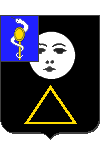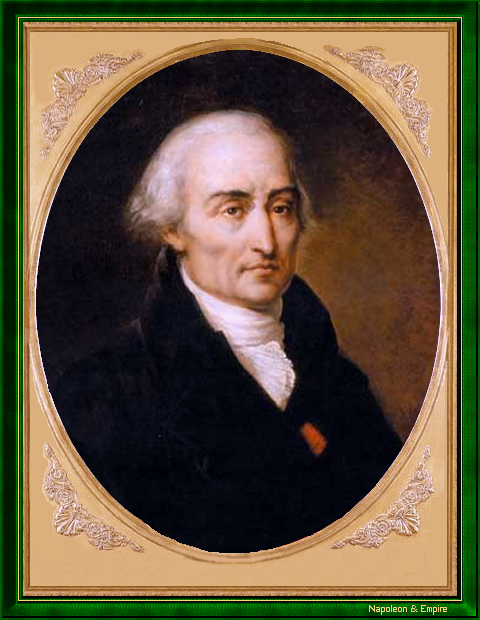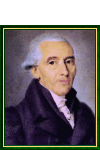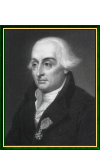Joseph-Louis Lagrange
Count of the Empire, Grand Officer of the Légion d'Honneur
Pronunciation:

Joseph Louis Lagrange (Italian: Giuseppe Lodovico Lagrangia) was born on January 25, 1736 in Turin, the Piedmontese capital of the Kingdom of Sardinia, into a French family on his father's side.
A professor at the age of nineteen, he founded the Turin Academy in 1758, which published his first works.
In Berlin, he was admitted to the Academy by Euler, the greatest mathematician of the time, whom he succeeded as president. He remained there for twenty years, until the death of Emperor Frederick II.
He then moved to Paris, where he published his Mécanique analytique in 1787. He was appointed director of the Académie in 1788 and member of the mathematics section in 1795.
Alongside Antoine Lavoisier, he was one of the fathers of the metric system and the adoption of decimal division of measurements. In 1799, along with Gaspard Monge and Pierre-Simon Laplace, he was appointed to the French Senate.
Showered with honors under the Empire, he died in Paris on April 10, 1813, and was buried in the Pantheon .
"Joseph-Louis Lagrange". Nineteenth century French school.

Although he is remembered for introducing the analytical method to geometry, Joseph Louis Lagrange studied all branches of mathematics and mechanics. His name can be found everywhere: Lagrange theorems, Lagrange functions, Lagrange equations...
In 1958, the French Postal Service released a 8.00 Franc stamp bearing the effigy of Joseph-Louis Lagrange .
A street in Paris bears his name, as does a crater on the Moon.
Address
134, Rue du Faubourg Saint-Honoré. Paris VIIIème arrondissement
This Empire-style hotel was built to order by Joseph-Louis Lagrange.Other portraits

"Joseph-Louis Lagrange". Anonymous painter, nineteenth century.

"Joseph-Louis Lagrange", Nineteenth century engraving.